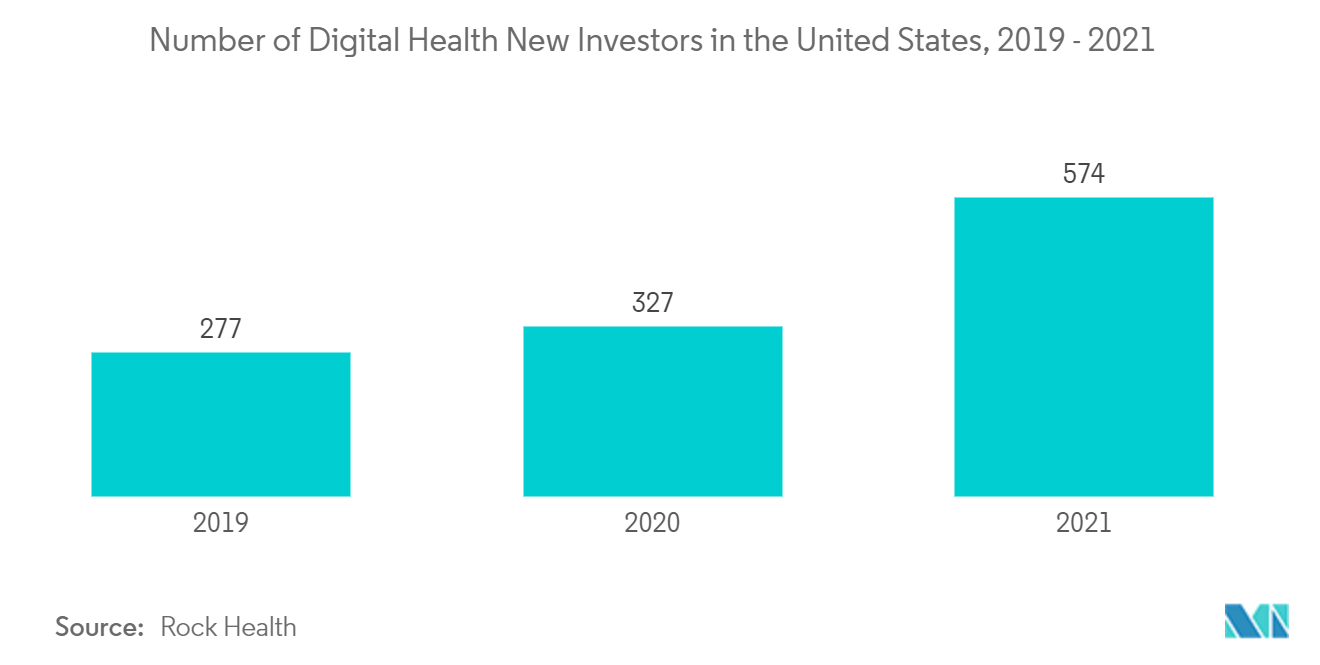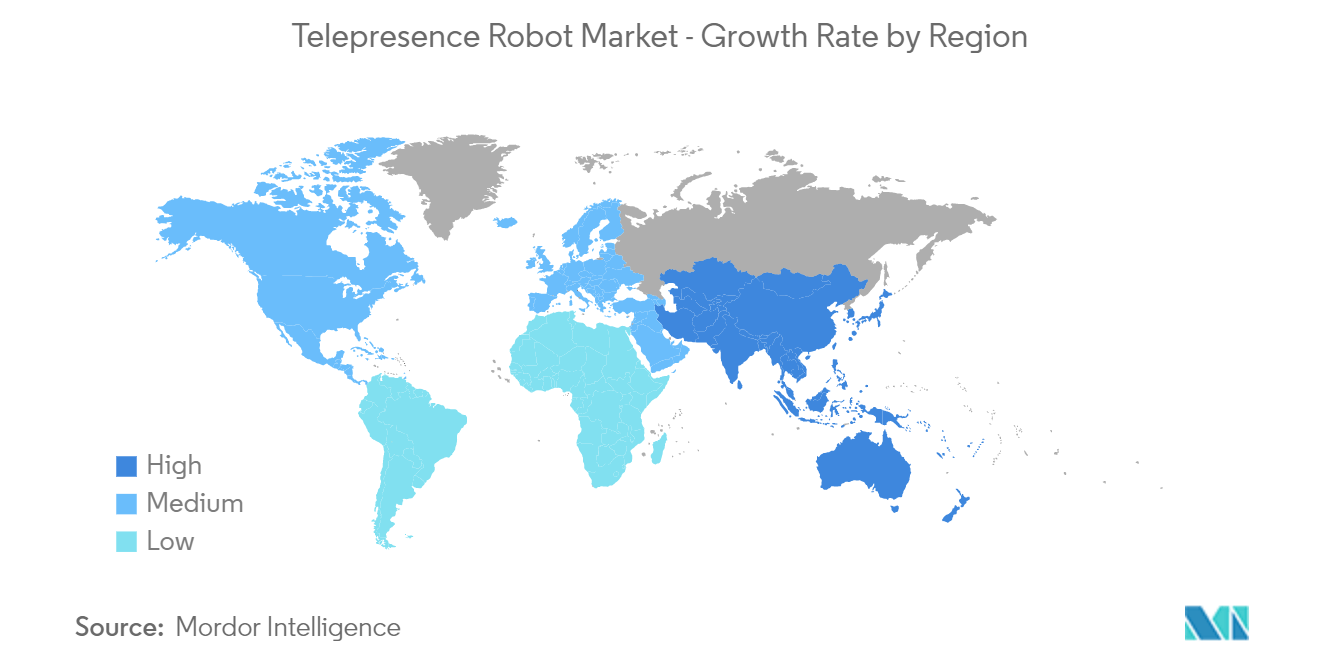Market Trends of Telepresence Robots Industry
This section covers the major market trends shaping the Telepresence Robots Market according to our research experts:
Healthcare Industry to Drive the Market Growth
- Telemedicine is a rapidly growing technological advancement in the healthcare industry, which involves remote patient monitoring by using digital technologies, such as video conferencing tools while fostering remote interaction between patients and healthcare providers. The increasing adoption and popularity of telepresence robots in the healthcare industry are further aiding in the growth of telemedicine.
- Telepresence robotics aids in the remote monitoring of patients in rural hospital settings where a medical specialist is physically unavailable, and the robot can be deployed to connect the patient with the healthcare provider. Also, a nurse can remotely connect and monitor the patient's recovery in the home. Such technology adoption has made quality health support available to remote locations. The rapid growth and advancement in communications technology have enabled this further, resulting in a complete ecosystem aiding the growth.
- According to Robohub, a telepresence medical robot is a customizable robot to monitor changes in a patient's medical bedside data and behavior and immediately sends alerts to nurses indicating the critical changes in the patient's condition and acts without delay. Pepper, for instance, deployed robotics during the pandemic to allow patients in the intensive care ward to communicate with their families, who were not allowed to visit. The robot could stand next to the patient's bed and use the tablet on its chest to deliver a video conference.
- Major key drivers of this segment's growth include the rise in demand for robots in the medical sector for critical tasks, such as online patient surveillance and physician consultation, as well as their expanding use in health facilities for tasks like bedside nursing, patient data collection, and lab automated support. Furthermore, increasing trends for telemedicine are also expected to create opportunities for market growth.
- Stimulation of government programs and funding for study and innovation in artificial learning and automation is fueling innovations and drawing new competitors in numerous economies. The increased number of industry participants implementing cutting-edge technologies, in addition to a higher concentration on R&D in reaction to shifting demands, resulted in the development of novel alternatives, which has influenced market expansion further.

North America is Expected to Hold a Major Market Share
- North America is estimated to have a significant demand for such robots, considering the strong network infrastructure and acceptance of new technologies. The region is also expected to be a key contributor to the technology, as it houses prominent telepresence robot vendors.
- The presence of the defined regulations, higher purchasing power, and the readiness of the end-user industry to upgrade the experience have been driving factors in the region. Furthermore, educational institutions, such as schools in the region, are promptly using technological products to enhance and improve students' learning experience. This has also helped in making the regional market enjoy the dominant share in this market.
- Telepresence robots are increasingly used in healthcare for remote patient medical monitoring and online medical consultations. Furthermore, the growing senior population will likely support the demand for healthcare telepresence robots, leading to the industry's expansion in North America. As per the Population Reference Bureau, the number of Americans aged 65 and older is anticipated to more than double from 52 million in 2018 to 95 million in 2060.
- The region's vital supporting infrastructures, including telecommunication and power, will likely drive growth. Besides that, the rising penetration of telepresence robotics in various business applications is expected to boost the worldwide demand for telepresence robots.
- Increasing investments in product development by players operating in the region are expected to drive market growth in the region. For instance, in April 2022, Shortcut Robotics, located near Los Angeles, launched beta testing of its first telepresence robots. The beta testing would be performed in two rounds to allow for updates in each phase.


